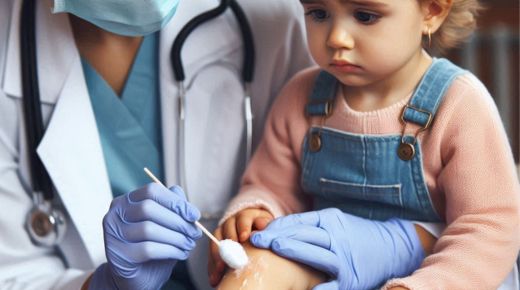
How to Properly Clean and Disinfect a Wound
Proper wound care is essential to prevent infections and ensure that wounds heal quickly and effectively. Cleaning and disinfecting a wound are the first steps in the wound care process, and they play a crucial role in minimizing the risk of complications. Whether you’re dealing with a minor cut, scrape, or a more serious injury, understanding how to clean and disinfect a wound properly can make a significant difference in the healing process. In this article, we’ll guide you through the steps to ensure your wound care routine is effective and safe.
Why Proper Wound Cleaning and Disinfection Are Important
When the skin is broken, whether from a cut, scrape, or puncture, it becomes vulnerable to infection from bacteria and other microorganisms. If these pathogens enter the wound, they can multiply, leading to infections that may delay healing, cause significant discomfort, and in severe cases, lead to serious health complications.
Proper wound cleaning and disinfection help remove dirt, debris, and bacteria from the wound, creating an environment that supports the body’s natural healing process. By keeping the wound clean and free from harmful pathogens, you reduce the likelihood of infection and promote faster recovery.
Step-by-Step Guide to Cleaning and Disinfecting a Wound1. Wash Your Hands
Before touching the wound, it’s essential to wash your hands thoroughly with soap and water. This simple step helps prevent the transfer of bacteria from your hands to the wound, reducing the risk of infection. If you have disposable gloves available, wearing them can provide an extra layer of protection.
2. Stop the Bleeding
If the wound is bleeding, apply gentle pressure with a clean cloth or sterile gauze to stop the bleeding. Elevate the affected area if possible to help reduce blood flow to the wound. Most minor wounds will stop bleeding on their own within a few minutes.
3. Rinse the Wound with Clean Water
The first step in cleaning the wound is to rinse it thoroughly with clean, running water. This helps flush out any dirt, debris, or bacteria that may be present in the wound. Use lukewarm water, as cold water can cause the wound to tighten, and hot water can damage the tissue. If you’re near a sink, running water over the wound for several minutes is effective. If running water is not available, use a clean container to pour water over the wound.
4. Use a Mild Soap or Wound Wash Solution
After rinsing the wound, you can gently clean the area around it with a mild soap and water. Avoid getting soap directly into the wound, as it can cause irritation. If available, a wound wash solution designed specifically for cleaning wounds can be used instead of soap. These solutions are typically sterile and formulated to cleanse the wound without causing harm to the delicate tissue.
5. Disinfect the Wound
Once the wound is clean, it’s time to disinfect it to kill any remaining bacteria. Apply an antiseptic solution or an antibiotic ointment to the wound. Common antiseptics include hydrogen peroxide, iodine, or chlorhexidine. These substances help kill bacteria and prevent infections. Be sure to follow the instructions on the product’s label for the correct application. If you’re using an antibiotic ointment, apply a thin layer directly to the wound.
6. Dry the Wound Gently
After disinfecting the wound, gently pat it dry with a clean, sterile cloth or gauze. Avoid rubbing the wound, as this can irritate the tissue and slow the healing process. Drying the wound helps prepare it for dressing, ensuring that the bandage adheres properly and keeps the wound protected.
7. Apply a Sterile Dressing
Covering the wound with a sterile dressing or bandage is essential to protect it from dirt, bacteria, and further injury. Choose a dressing that is appropriate for the size and type of wound. Adhesive bandages work well for small cuts and scrapes, while larger wounds may require gauze pads and medical tape. The dressing should be changed daily or whenever it becomes wet or dirty.
8. Monitor the Wound for Signs of Infection
Even with proper cleaning and disinfection, it’s important to monitor the wound for signs of infection, such as increased redness, swelling, warmth, or the presence of pus. If you notice any of these symptoms, or if the wound does not seem to be healing, seek medical attention promptly. Early intervention can prevent minor infections from becoming more serious.
Proper wound cleaning and disinfection are critical components of effective wound care. By following the steps outlined in this article—washing your hands, rinsing and cleaning the wound, disinfecting it, and applying a sterile dressing—you can significantly reduce the risk of infection and promote faster healing. Whether dealing with a minor cut or a more serious wound, taking the time to clean and disinfect the wound properly is essential for a smooth recovery and to prevent complications. Always keep a well-stocked first aid kit at home, and when in doubt, consult a healthcare professional for advice on wound care. Take care of your elderly relatives and search for adult diapers if they are needed.


